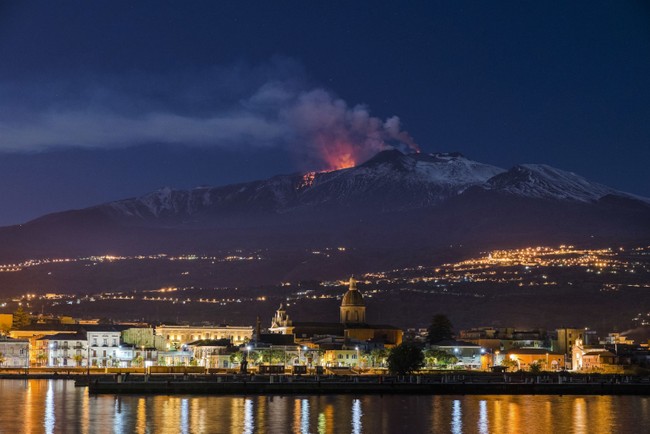
When set against the scale and scope of the world, humans and our efforts can look pretty tiny. When we have visitors here in the Great Land, one of my favorite places to take them is right up the road to the hill overlooking our little community center, where on a clear day, Denali and the Alaska Range absolutely dominate the northern horizon. And Denali, I always point out, is 150 miles away from that overlook.
And when something happens on the earth – weather, earthquakes, volcanic eruptions – those events can make us feel downright puny. This brings us to the Phlegraean Fields in Italy, one of the world’s largest supervolcanos, and one that is becoming more active.
These volcanic fields, nestled just west of Naples, Italy, are among the top eight emitters of volcanic carbon dioxide worldwide.
Since 2005, one spot in particular — the Solfatara crater — has been releasing increased volumes of gas, catching the attention of researchers and locals alike.
Gianmarco Buono, a volcanologist at the Italian National Institute of Geophysics and Volcanology (INGV), is leading a study to understand what’s behind this surge in gas emissions.
“Estimating the source of the carbon dioxide is important to properly reconstruct what is happening in the magmatic system and the hydrothermal system,” says Buono.
His team aims to provide a tool that can distinguish between carbon dioxide coming from magma and that released by other processes, a method that could be useful in volcanic regions around the world.
So what would it mean if this thing woke up one morning and decided to go “Blooie!” Well, nothing good.
In the simplest of terms, a supervolcano is essentially a volcano on steroids. It’s a massive volcanic system capable of producing eruptions thousands of times more powerful than a regular volcano.
These eruptions can eject more than 1,000 cubic kilometers of material into the atmosphere, which can have catastrophic effects on the global climate and environment.
In other words, a supervolcano has the potential to cover millions of square miles (or kilometers, if you’re from a country that hasn’t put a man on the moon) with feet of volcanic ash and hold the potential to plunge much of the planet into something like a nuclear winter on steroids.
In the immortal words of another scientist, Dr. Egon Spengler, “It would be bad.”
Fortunately, the intervals between eruptions of these things can only be measured on time scales that are, well, geological. It could go off tomorrow – or it may not go off for ten thousand years.
See Related: Danger in the Pacific Northwest: What’s Worrying Geologists Most?
Tongan Volcano Could Affect Weather for a Decade
Yellowstone Is a Ticking Time Bomb, and Beside It, We Look Really Puny
In other words, much like North America’s Yellowstone supervolcano, there’s no reason to worry. It’s not like we can do anything about it in any case.
What’s interesting, though, is how this affects our perception of this spinning blue ball we live on. Sometimes, reading about something like this reminds us that our home planet operates on time scales we have trouble comprehending and has effects and systems that are vast beyond our imagination. One supervolcano could wipe away hundreds of years of human progress – and even one pretty standard volcano can belch out dust and gases that will bollix up our climate bigly for several years. Even without a major eruption, the Solfatara crater outs out between 4,000 and 5,000 tons of carbon dioxide each and each day. That’s roughly the equivalent of burning half a million gallons of gasoline – every day.
Not there’s something to remember on Thanksgiving when your freshman-in-college niece or nephew starts whining about climate change.
